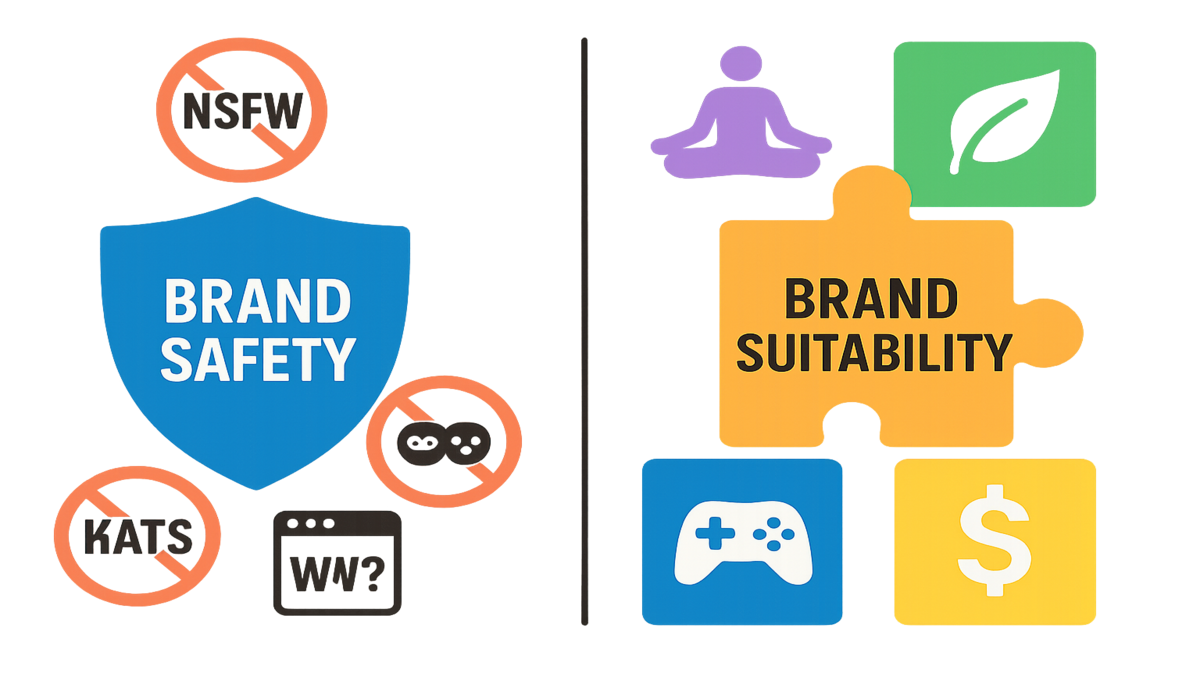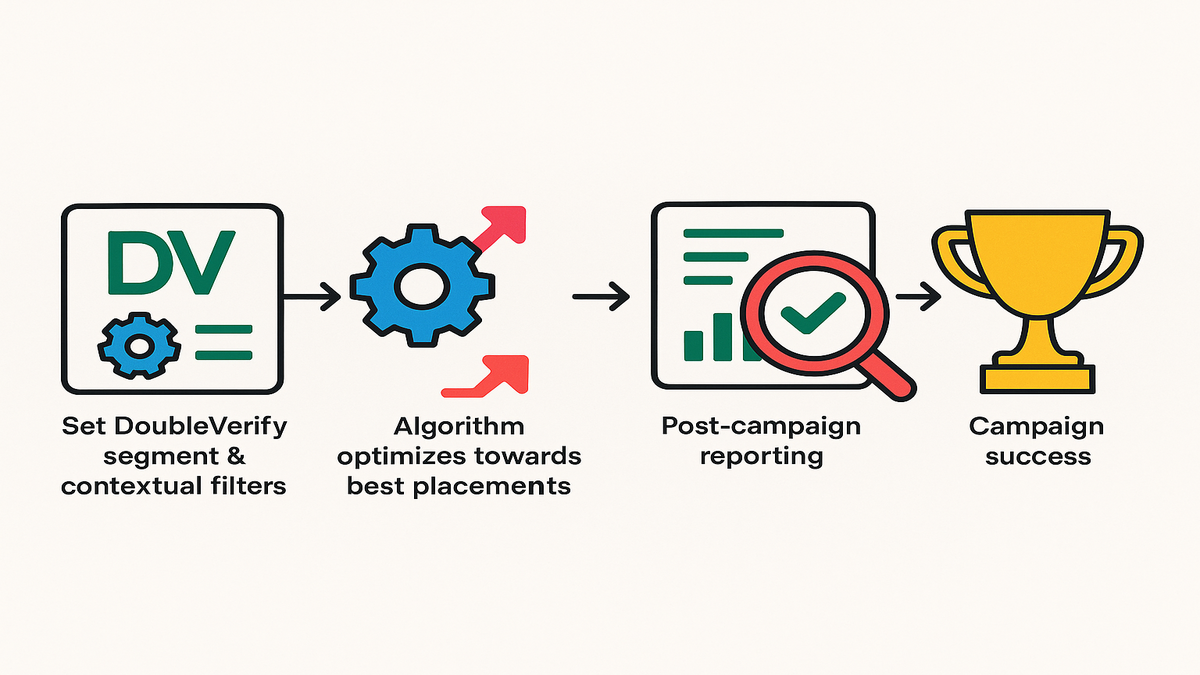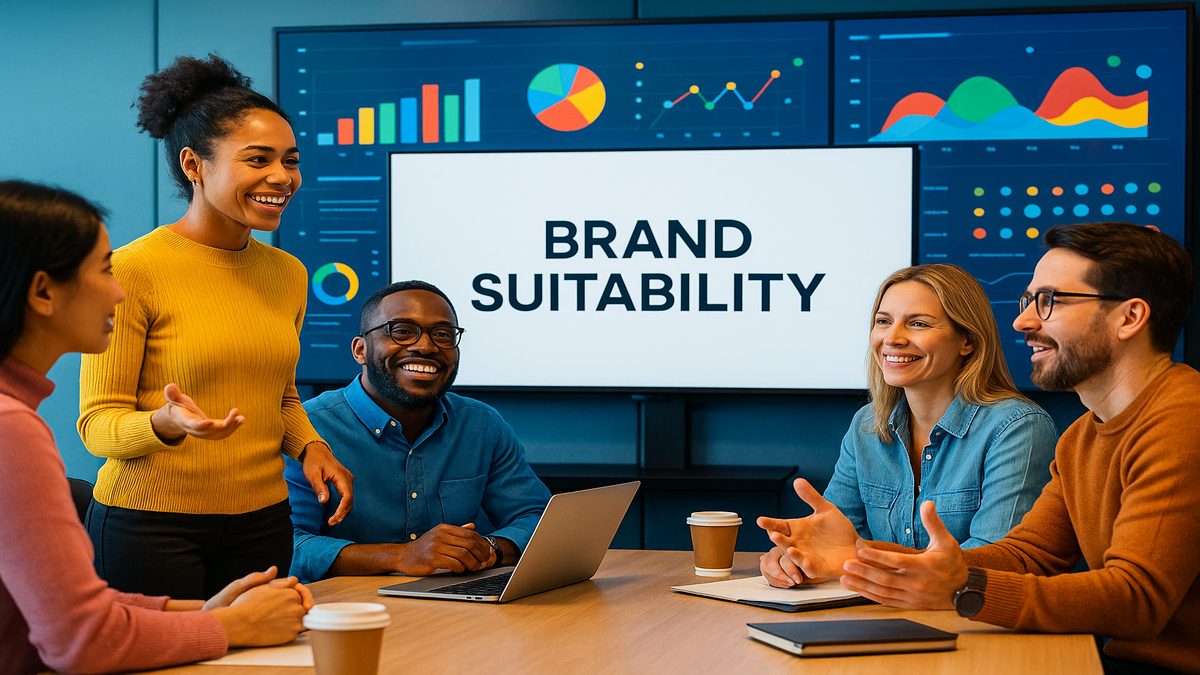
Unlocking Brand Safety and Suitability in Adobe DSP Beta

Advertising in 2024 is a bit like sneaking into a house party—you wanna have fun, just not with the weird guy muttering jokes by the bathroom. That’s why brand safety and suitability exist in DSPs (Demand-Side Platforms). Picture them like your own bouncer, making sure your ads only chill with the right people, and don’t end up somewhere sketchy.
Brand safety used to mean just staying clear of the obvious trouble spots—the creeps, the gross stuff, that loud uncle at family dinner. Brand suitability? That’s where the fun starts. It’s about making sure your brand vibes with the conversations around it. Like, if you sell yoga mats for mindfulness, you don’t want your ad tossed between wild MMA fight clips and crazy tech unboxings. Enter Adobe DSP’s brand suitability open beta: a dashboard that puts you in charge of where your ads hang out, so your brand stays cool, not cringey.
Looking to get more out of every ad dollar, with your values still intact? Stick with me. We’ll break down what brand safety and suitability mean in regular words. Plus, we’ll see how Adobe’s new controls (with Amazon and Meta right behind them) put you in the driver’s seat. You get tighter targeting without risking your brand looking dumb.
Key Takeaways
- Get deep: With Adobe DSP’s beta, you adjust brand suitability by advertiser or ad group. Target your brand’s unique vibe each time.
- Use DoubleVerify segments for steady brand safety—one segment ID, one style of protection, everywhere your ad appears.
- Context filters are like a GPS for ads. They’ll block your stuff from showing in weird or risky places.
- After a campaign, you get reports showing exactly where your ads showed up. No guessing, just facts.
- Fine-tune goals with ADSP custom objectives. Let the computer handle the hard parts and waste less money.

Brand Safety vs. Suitability
Fast Definitions
Let’s keep this simple, like explaining to your smart friend who’s never touched a DSP:
Brand safety is like walking into a party with your shoes tied. You dodge banana peels like hate speech, sketchy websites, and dodgy content—the places you’d never want your ad to end up. These rules keep your product from being the butt of jokes online.
Brand suitability is safety’s cooler cousin. It’s not just saying "not there!" It’s making sure your brand actually fits in, not just floating in the background. Think: selling protein shakes? You don’t want your ad stuck between clips about unhealthy food or wild eating stunts. Suitability says, “Let’s blend in and stand out for the right reasons.”
Expert quote: “Brand suitability is making your message not just safe, but actually fun and interesting for your fans,” says Mike Zaneis, CEO of TAG.
So, Does This Matter?
Don’t think it’s just big brands that care. When ads appear next to bad stuff, it gets ugly—fast. In 2023, Integral Ad Science found 85% of marketers now care more about suitability, not just avoiding the obvious. Bad placements lose real money and trust—not a joke. eMarketer reports 43% of online folks lose trust in brands if they see ads in the wrong spots. Suitability isn’t “nice to have” now. It’s “do or die.”
Adobe DSP’s Beta Features
One Place, All Controls
The new stuff from Adobe DSP (and Amazon, Meta not far behind) lets you get super careful about where ads show up. Doing a big awareness push? Go big, loosen up. New, expensive product? Lock it down, only show it in classy spots.
You make the calls at both the advertiser and the ad group level. Forget old, boring, one-size-fits-all settings.
Advertiser Level Adjustments
API-level control means you can drop new rules across every campaign—think Starbucks switching from red to pumpkin spice cups, but do it in one click. (And way faster.)
Story: Got lots of products under one brand? Now you can keep the main values but tweak placements for each campaign. No more endless manual changes.
Ad-Group Level Tweaks
Say you’re dropping a wild sneaker line for Gen Z, but still running an old-school campaign for the OG fans. You can be picky for the wild launch—skip risky stuff—and take it easy for the throwback push. Each campaign gets its own vibe and risk level.
Let AI Take the Wheel
Here’s where things get smart. Adobe’s "ADSP_" goals let their AI do the boring math. The AI checks clicks, views, and conversions, then moves your ads closer to the best-fit places.
You don’t just set it and pray. It learns from what works (and what bombs), so your next move is smarter and less stressful.
“Weighted custom goals help you spend on stuff that actually works—so suitability helps you win, not just stay safe,” says Anna Pickard, Adobe Product Lead.
Simple Wins
- Better ad matches mean higher clicks and more bang for your buck.
- Less busywork for you. More time for fun stuff.
- Ads hit your crowd instead of random people. Risk down, results up.
Toolbox
DoubleVerify ABS Segments
DoubleVerify ABS segments scan every chance your ad might show, way before anything goes live. Plug in the ABS segment ID and, like magic, you’re protected everywhere—open web, private channels, and direct deals.
- Pre-bid Filtering: Like a club bouncer. If the place stinks, your ad doesn’t even walk in.
- Post-bid Checks: Once live, DoubleVerify still keeps an eye out. If something slips, you get a report right away.
This two-step stops trouble before it starts and builds serious trust with whoever you need to impress.
Context Filters
Modern DSPs do more than just flip switches. Context filters let you block keywords, whole topics, or even the entire vibe of a page. You can say, "skip conspiracy talk," "no slapstick," or "forget political drama." Providers like Peer39, IAS, DoubleVerify let you get crazy specific.
Example: A fintech brand can dodge meme-filled sites or celeb gossip, but go big on financial news, business blogs, and podcasts everyone trusts. You get better matches, less risk, and way happier viewers.
“Treat suitability as your secret weapon—score the right eyeballs, skip the drama,” says Evan Rutchik, CEO of Ogury.
Why It Works
- DoubleVerify stats show up to 90% fewer risky impressions.
- By matching ad spots to your real message, you get higher results, not just safety.
- Set it once, and every ad follows the same smart rules.
Suitability Reporting
Get the Receipts
Filters are cool, but you have to see the numbers. DoubleVerify (and friends) lay it out: after every campaign, you see
- Where every ad showed up
- If those spots actually fit your rules
- Which parts protected you, and what missed
Didn’t like a certain site? Add it to a blocklist for next time. Find a random hotspot? Move more money there.
Real Story: A top streaming service used these reports, found 15% of their spend ended up where fans weren’t even looking. They shifted those dollars to podcasts, live events, and influencer collabs—clicks shot up 20%, all while staying tight with Gen Z.
“If you can’t measure it, you can’t fix it.” Next-gen DSPs finally make that true for ad placements.
Make The Data Work
- Block bad fits, fast.
- Test safe, new places for future wins.
- Prove you care about your brand—show your team, your boss, and clients.
Beta Advantages
Early Access
Adobe DSP’s open beta is like cutting to the front of the theme park ride. Maybe a feature or two isn’t finished, but you get the first say on what works, what doesn’t.
- Be the first to try deep suitability controls—test, learn, repeat.
- Give Adobe feedback based on your real-life campaigns.
- Move faster than slowpokes who wait for features to roll wide.
Testing on Twitch
These controls work on Twitch for display and video ads. Most people under 40 live on Twitch, so this is your shot at testing suitability under real pressure. Live stuff, raw reactions—it’s the real deal for ad control.

Amazon, Meta, and More
Everyone’s Bringing Their Own Flavor
Amazon DSP
Amazon uses its own data for tight control. You get proven no-fraud inventory and smart suitability controls. Their Brand Lift shows what works, and Amazon Attribution tracks if those safe placements drive real sales.
Want to see all this in one platform? Check out DSP Services to keep your Amazon ads tidy.
Meta
Meta lets you block by topic, publisher, page, even keyword. The Business Manager’s Brand Safety & Suitability Center lets you avoid noisy creators or wild comment threads and keep your ads in friendly areas.
“Every DSP—Amazon, Meta, Adobe—now knows safety isn’t enough. Suitability is where brands separate from the pack.” — Grace Gordon, programmatic advisor.
The Road Ahead
The smart crowd is betting that safety plus smart suitability is the winning move. Experts say by 2025, this will be standard. Get it right now and you’re ahead. Those who blend them early will win big trust and a boost in results.
Suitability Steps
Let’s get hands-on. Here’s how to take all this from buzzwords to real, live campaigns:
1. Use DoubleVerify ABS Segments
Add the DoubleVerify ABS segment ID in Adobe DSP to keep all buys synced. Every impression gets double-checked for your brand vibe.
Quick tip: Make this your default. Set it once, stay protected.
2. Go Custom With Data
All custom goals should start with "ADSP_". This will wake up Adobe’s AI, so you get smart targeting—not just cheap clicks.
3. Turn On Context Filters
Make sure Peer39 or IAS filters are running on every campaign, even "safe" ones. This way, nothing slips through the cracks.
4. Watch Reports and Change Fast
Check campaign reports early and often. If something’s not working, block it. If a random site performs well, put more money there. Use the weird cases to inspire your next big test.
Beta Bonus Round
- Tons of companies have basic safety now, but suitability makes your placements better and more on-target.
- Routine reports and quick changes = you get better with every campaign.
- Beta isn’t a risk—it’s a shot to test, learn, and beat others to the punch.
TL;DR—Suitability: How to Be Safe and Sell
- Suitability is your dress code for digital ads. Don’t wing it each time.
- Adobe DSP (plus Amazon, Meta, and others) gives tight controls, smart AI, good reporting, and Twitch to test things live.
- Savvy marketers use DoubleVerify, tune filters, block bad fits, and boost what works.
- You choose your crew. Suitability is how you win friends and earn clicks.
Suitability Checklist
Jump in with these quick moves:
- Add DoubleVerify (ABS) segment IDs to Adobe DSP for safety—no matter where your ads go.
- Set rules at both advertiser and ad-group levels with the API. Tailor each campaign.
- Enable context filters with Peer39 or IAS—don’t leave any campaign uncovered.
- Use "ADSP_" objectives so Adobe’s AI aims for high-quality, low-risk spots.
- Study the reports and update your blocklists fast.
- Share feedback during beta—your voice could shape all future DSP features.
Go try this stuff. In today’s wild digital world, every ad slot is a new party. Your brand can be the fun guest—just gotta choose the right crowd, vibe, and message all the way through.
Want proof it works? See our Case Studies for brands that crush it with smart suitability and programmatic know-how.
Curious how it all adds up? Try Amazon Attribution and Amazon Brand Lift Study to track real results from your new ad moves.

